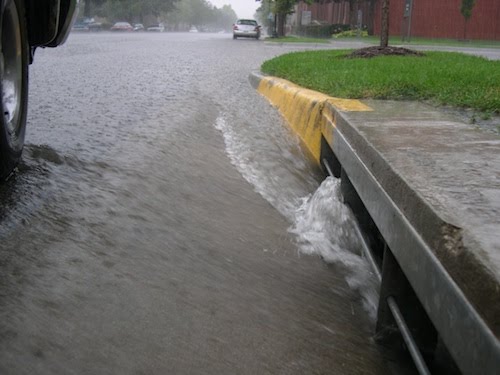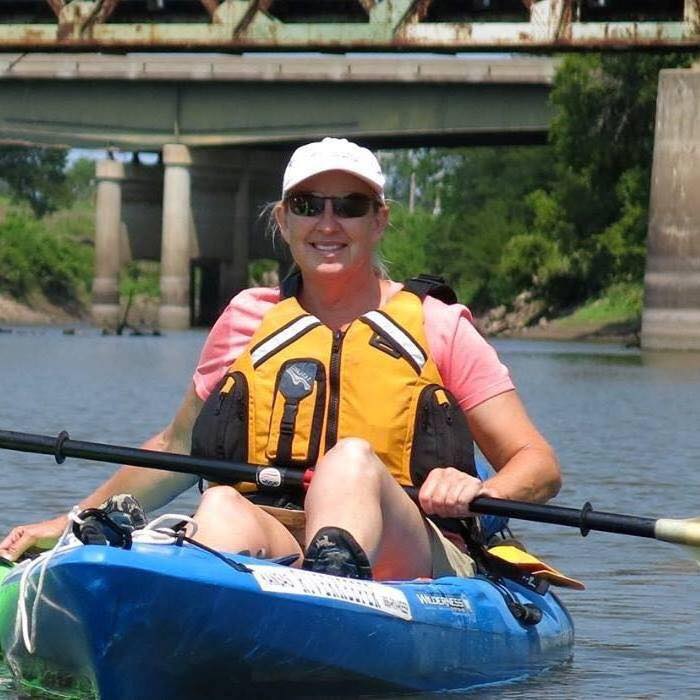We all know about pollution from industrial and municipal sources. When you turn on a faucet or flush your toilet water flows down pipes, leaving your home and entering a municipal sewer system. After it is treated in a wastewater treatment plant it is discharged into the river. Potentially contaminated water that enters the river from an identifiable location is what we call a point source, or end-of-pipe pollution, and it is carefully regulated by the Kansas Department of Health and Environment and the U.S. Environmental Protection Agency. But water can also flow over your lawn and driveway during a rainstorm, and it runs off agricultural fields and roads—this water eventually makes its way to the river without being treated. Water that picks up pollution by flowing over a lawn or field that has been sprayed with fertilizer or pesticides is called non-point source pollution. Another common term is “stormwater runoff” which emphasizes the role of rainfall in washing chemicals off the land and into the river. The stormwater section of our website provides valuable information on the problems associated with runoff, and what you can do about them.
The Kansas River watershed is made up of vast tracks of grazing lands, as well as cropland; but in the Lower Kansas Watershed there is a significant amount of land that has been developed for urban and suburban uses. This means that the Kaw is impacted by both agricultural run-off and urban stormwater runoff.
Non-point source pollution is the biggest cause of water pollution in the U.S. and it is one of the hardest to control. Imagine how much motor oil is washed in the river during a storm—you have hundreds of neighbors with cars that leak small amounts of oil onto their driveways and the streets in your neighborhood, each contributing a small amount of pollution to the watershed you live in. When it rains, all of that oil is picked up by the water flowing down the street and into the storm drains—and from there it flows to the river. How do you control thousands of little sources of pollution? That’s why we all have to work together to control stormwater runoff, it is something we all contribute to and something we can all help to control. The old saying “it takes a village” is very true when it comes to helping our river by reducing non-point source pollution.


 Paddle safely! Use the links below to quickly access information that impacts river conditions.
Paddle safely! Use the links below to quickly access information that impacts river conditions.
